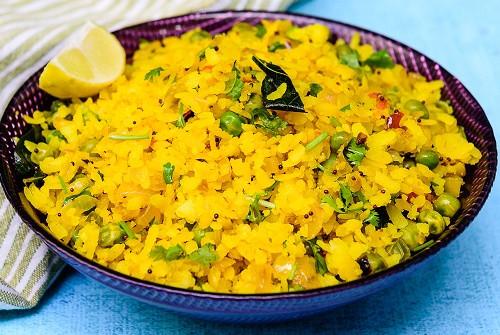Step into the heart of India's vibrant culinary tapestry with our delectable Poha recipe. This beloved dish, hailed as a breakfast classic and cherished comfort food, encapsulates the essence of Indian flavors and tradition. Join us as we guide you through the art of creating the perfect Poha, where simplicity meets gastronomic delight.
Unraveling the Magic of Poha
Poha, also known as flattened rice or beaten rice, is a humble yet incredibly versatile ingredient. Its delicate texture and ability to absorb flavors make it a canvas for a myriad of taste experiences. From the bustling streets of Mumbai to the serene homes of rural India, Poha graces tables with its warm aroma and wholesome nourishment. Let's dive into the world of Poha and unlock its secrets.
Ingredients You'll Need
Gather the following ingredients to embark on your Poha culinary journey:
2 cups of Poha (flattened rice)
1 medium-sized onion, finely chopped
1-2 green chilies, slit lengthwise
1/2 cup of green peas (fresh or frozen)
1 medium-sized potato, peeled and diced
1/4 cup of peanuts
8-10 curry leaves
1 teaspoon of mustard seeds
1 teaspoon of cumin seeds
A pinch of asafoetida (hing)
1/2 teaspoon of turmeric powder
1 teaspoon of sugar
Salt to taste
Fresh coriander leaves for garnishing
Lemon wedges for serving
Cooking oil
Step-by-Step Instructions
Prepping the Poha: Start by rinsing the Poha under running water for a brief moment. Drain the excess water and let the Poha sit for about 10 minutes. This allows it to absorb moisture and soften. Gently fluff the Poha with a fork to separate the grains.
Tempering the Aromatics: Heat a tablespoon of cooking oil in a pan over medium heat. Add the mustard seeds and cumin seeds. Once they start to splutter, add the asafoetida and curry leaves. This aromatic base sets the stage for the flavors to unfold.
Creating a Symphony of Flavors: Toss in the diced potatoes and peanuts, sautéing until the potatoes turn golden and crispy. Add the finely chopped onions and slit green chilies, sautéing until the onions become translucent and fragrant.
Adding Color and Nutrients: Introduce the green peas to the pan, adding a burst of color and nutrition to the dish. Stir in the turmeric powder, sugar, and salt, ensuring even distribution of flavors.
Embracing the Poha: Gently fold in the soaked and fluffed Poha, allowing it to mingle with the aromatic mixture. Be mindful not to overmix, as Poha is delicate and can break easily.
Infusion of Goodness: Cover the pan with a lid and let the Poha cook on low heat for a few minutes. This gentle steaming process allows the flavors to meld, transforming the Poha into a flavorful medley.
Garnishing and Serving: Once the Poha is cooked to perfection, garnish it with fresh coriander leaves, adding a burst of freshness and vibrancy. Serve the Poha hot, accompanied by lemon wedges for a zesty finish.
A Flavorful Journey on Your Plate
With every spoonful of our Poha, you'll embark on a flavorful journey that captures the heart of Indian cuisine. The Poha's delicate texture is complemented by the robust blend of spices and the comforting familiarity of the ingredients. Each bite is a celebration of contrasts – the softness of the Poha against the crunch of peanuts, the warmth of spices against the coolness of lemon.
Customization and Pairing
While our Poha recipe is a testament to tradition, feel free to unleash your culinary creativity. Add a handful of grated coconut for a touch of tropical sweetness or toss in some roasted cashews for extra indulgence. For a protein-packed twist, consider adding cooked and shredded chicken or paneer.
Pair your Poha with a steaming cup of masala chai for an authentic Indian breakfast experience, or enjoy it with yogurt and a side of pickle for a wholesome and balanced meal.
In Conclusion
Poha is more than just a dish; it's a glimpse into the heart and soul of Indian cuisine. With each bite, you're transported to bustling bazaars, aromatic spice markets, and the warmth of family kitchens. So, step into this culinary journey and savor the flavors that have stood the test of time.


0 Comments